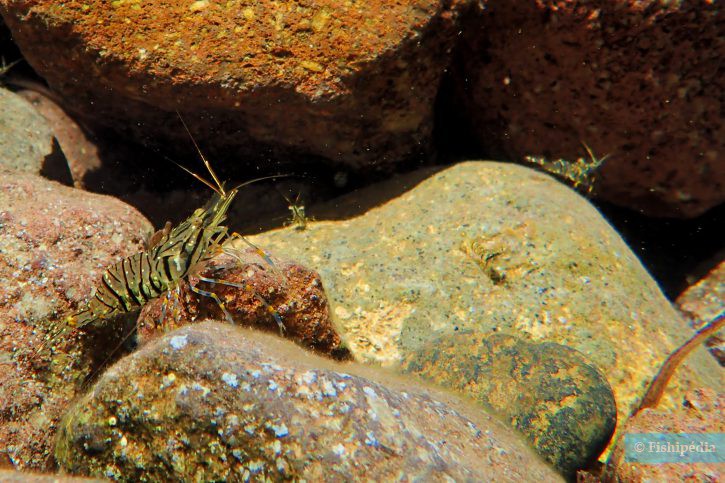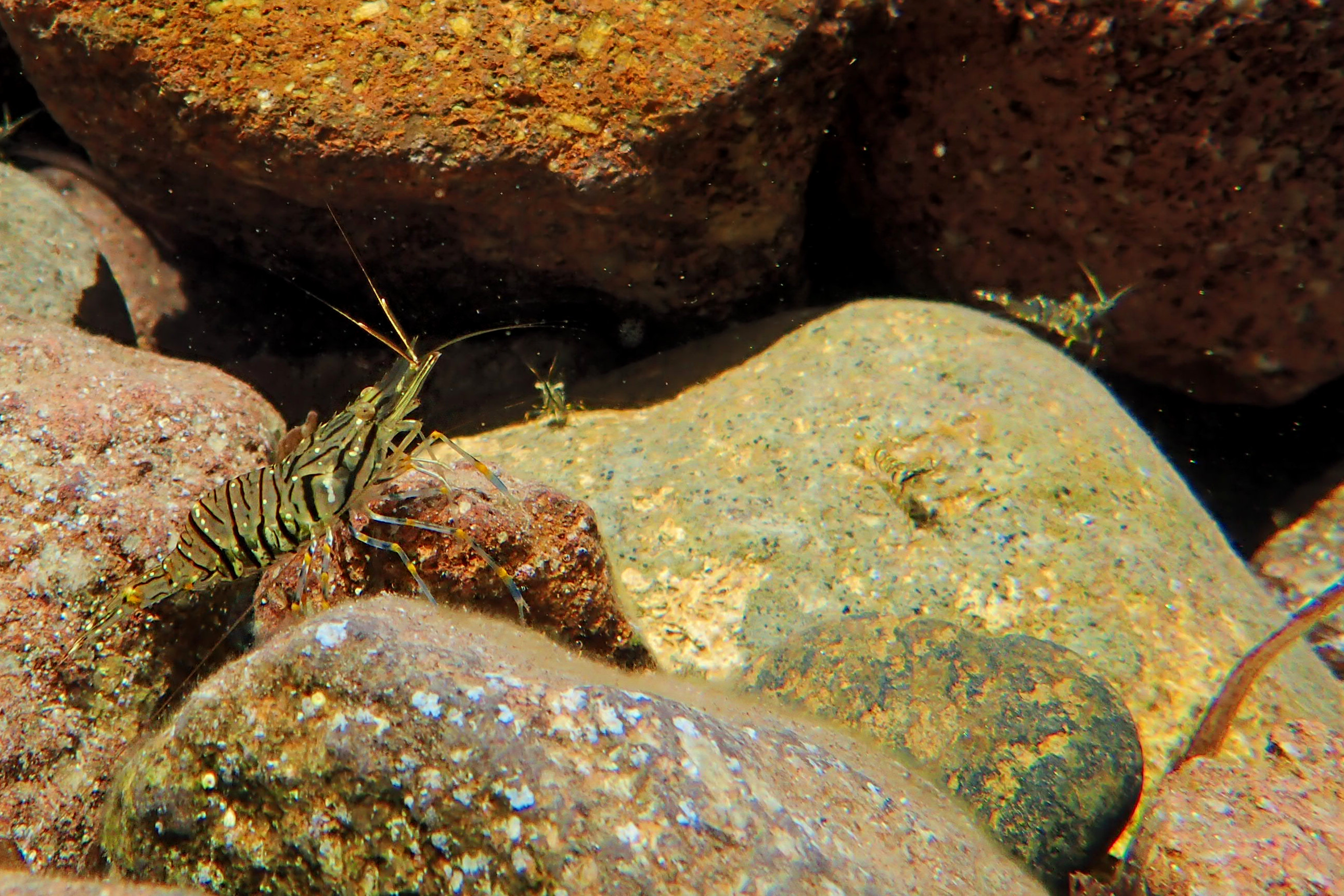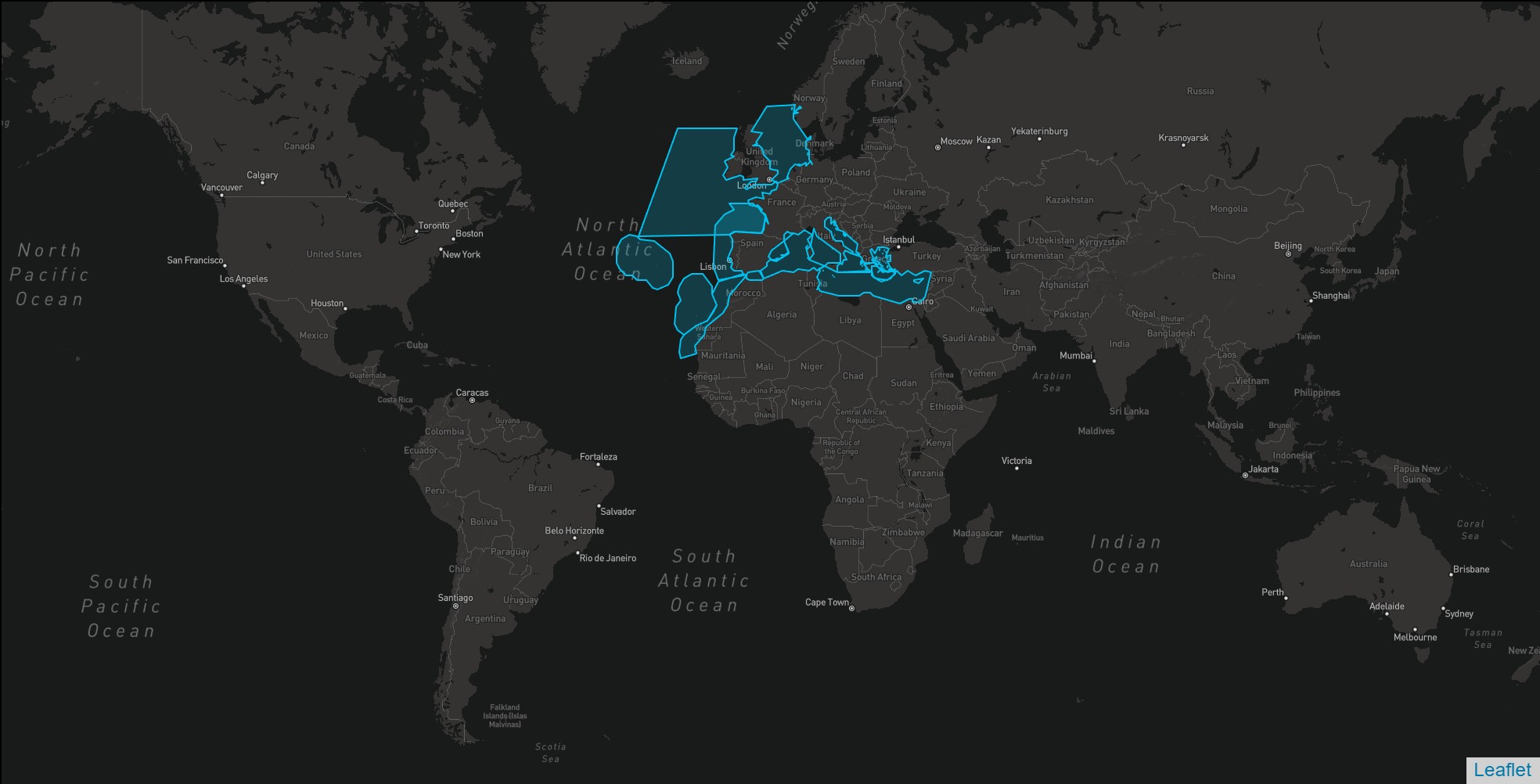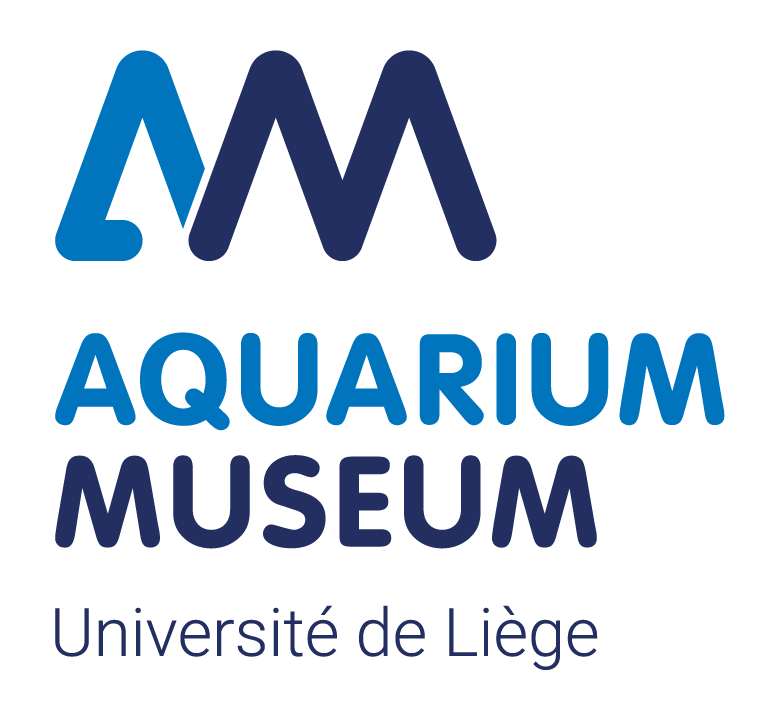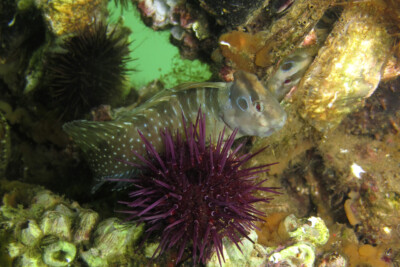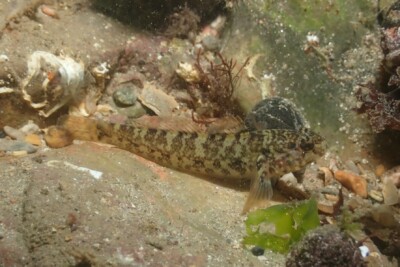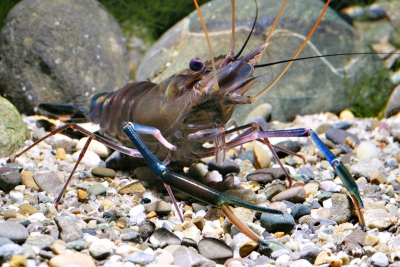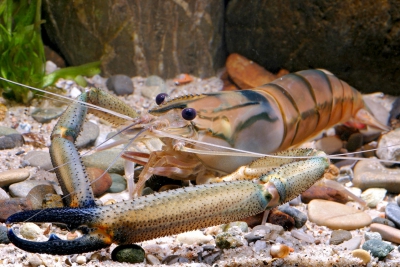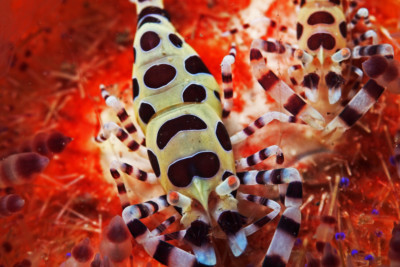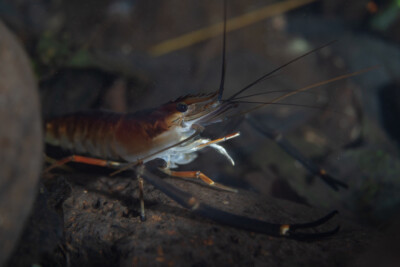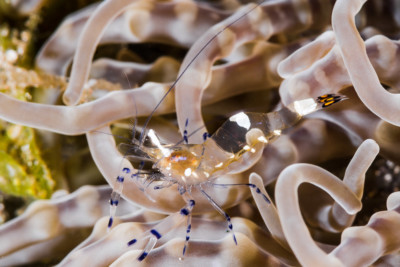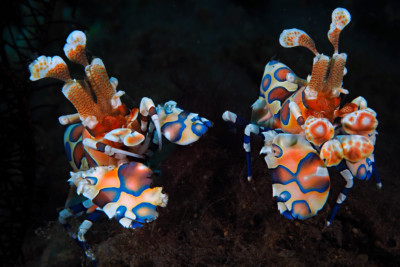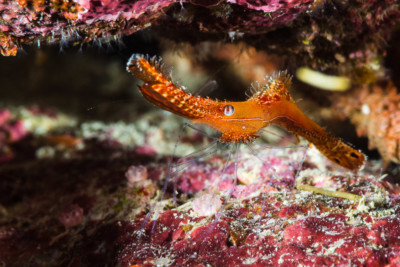Introduction
Palaemon serratus, commonly known as common prawn, is a salt water crustacea.
This sheet is currently being prepared. The texts currently proposed come from our data model or are being drafted. To request priority for this content, you can write to us HERE.
Who is it?
Morphology
-
Average size8 cm
-
Maximum size11 cm
-
Patternvertical stripes
-
Average size8 cm
-
Maximum size11 cm
-
Patternvertical stripes
How to recognize this crustacea ?
The common prawn measures between 8 and 11 cm. this crustacea is bicolore with a predominantly noir and gris body. The also has noir vertical stripes.
Behaviour & Life cycle
-
Sociabilityliving in small groups
-
territorialNo
-
VenomousNo
-
Way of livingdiurnal
Like all crustaceans, The common prawn molts whenever it becomes cramped in its shell. Before the hardening of its new body, it is more vulnerable and spends a good part of its time hidden. This mechanism, very complex, allows the periodic renewal of the exoskeleton and part of the internal skeleton. It is also during the moult that the females become fertile.
The common prawn is a crustacea living in small groups naturally found on the bottom. This species is omnivorous .
Although the common prawn is non-territorial, it is sometimes aggressive towards other species.
Reproduction
-
Reproductionovipare
The common prawn is a crustacea ovipare.
Harmless species
This species does not represent any particular threats to humans when encountered in its natural environment.
Origin and distribution
What is its habitat?
Natural environment characteristics
-
Temperature9 - 19 °C
-
Depth0 - 40 m
-
FlowMedium
Biotope presentation
The common prawn is most often found at a depth between 0m and 40m. However, it is not impossible to find this species at other depths.
This species lives in decaying vegetation (branches, leaves) in low current areas.
Species of the same biotope
To go further
Sources & Contributions
Participation & Validation
The Fishipedia team and specialist contributors are committed to providing high-quality content. However, although the information comes from scientific sources or testimonials from specialists, the cards may contain inaccuracies.

Adrien Falzon
Translation
Translation done with the valuable contribution of our translators, who make this information available to a wider audience. We sincerely thank them for their commitment.
Scientific partners
Tags
Species of the same family
Species of the same biotope
